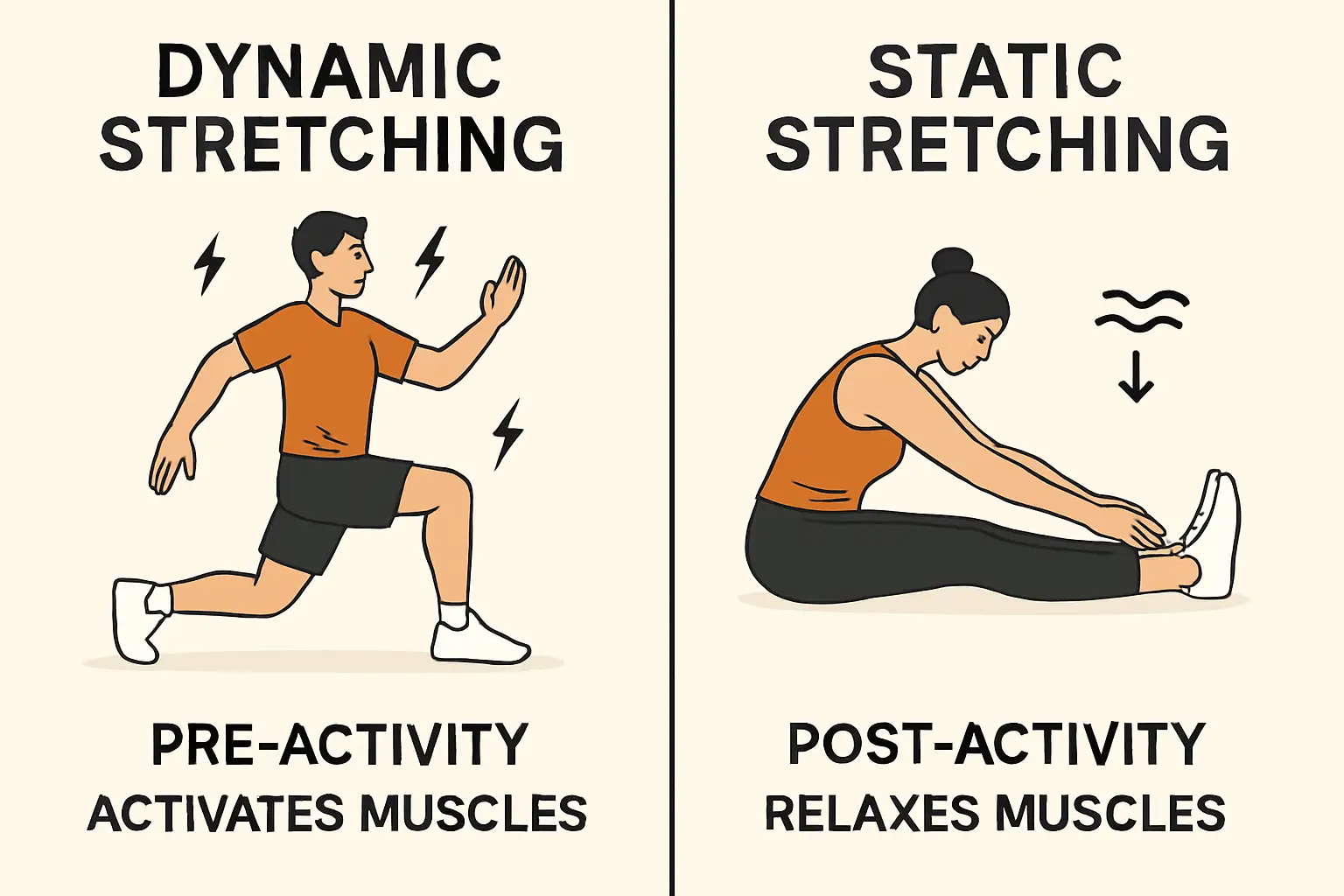
Watch this video to find out.
Warming up before activity isn’t optional—it’s the secret to safer movement, better performance, and long-term results. But not all stretching is created equal. Science shows that dynamic stretching is best for warm-ups, while static stretching fits only after exercise.
Dynamic vs Static Stretching: Key Differences
- Dynamic stretching uses active, moving exercises (arm circles, leg swings, walking lunges) to get muscles and joints ready for action. This kind of stretching:
- Excites proprioceptors (the sensors that tell your brain where your body is in space), making muscles respond quickly and efficiently.
- Increases blood flow, muscle temperature, flexibility, and coordination—all boosting athletic performance and reducing injury risk.
- Rehearses movement patterns, prepping your nervous system for real-world moves.
- Static stretching (toe-touch and hold, side bends, hamstring stretch) is slow and sustained—holding a muscle in one position for 15–90 seconds.
- Works after activity, relaxing muscles and easing tension.
- If done before a workout, static stretching can actually trigger a mild stress response, causing muscles to lengthen and weaken—reducing power, strength, and reaction time. Static stretching before exercise occasionally raises injury risk, and can undermine performance.
The Gold Standard: Myofascial Stretching
- Myofascial stretching is an advanced form of stretching that targets the connective tissue (fascia) linking muscles and joints throughout the body.
- Unlike basic dynamic or static stretches, myofascial stretching balances tension across muscle chains, restores mobility, and optimizes alignment.
- Best for long-term results: higher flexibility, movement confidence, and injury prevention—all in one.
How To Warm Up Like a Pro
- Start every session or activity with 5–10 minutes of low-intensity movement (walking, light jogging, jumping rope).
- Add dynamic stretches—arm circles, walking lunges, trunk rotations, hip, and shoulder swings.
- Save static stretches for after exercise—when relaxation and resetting muscle length is the priority.
- Blend in myofascial stretching for complete mobility and long-term functional gains.
Explore myofascial stretching and programs designed for Santa Fe’s active community:
Myofascial Stretching: The Best Total Body Active Stretches
Find out more @

Leave a Reply